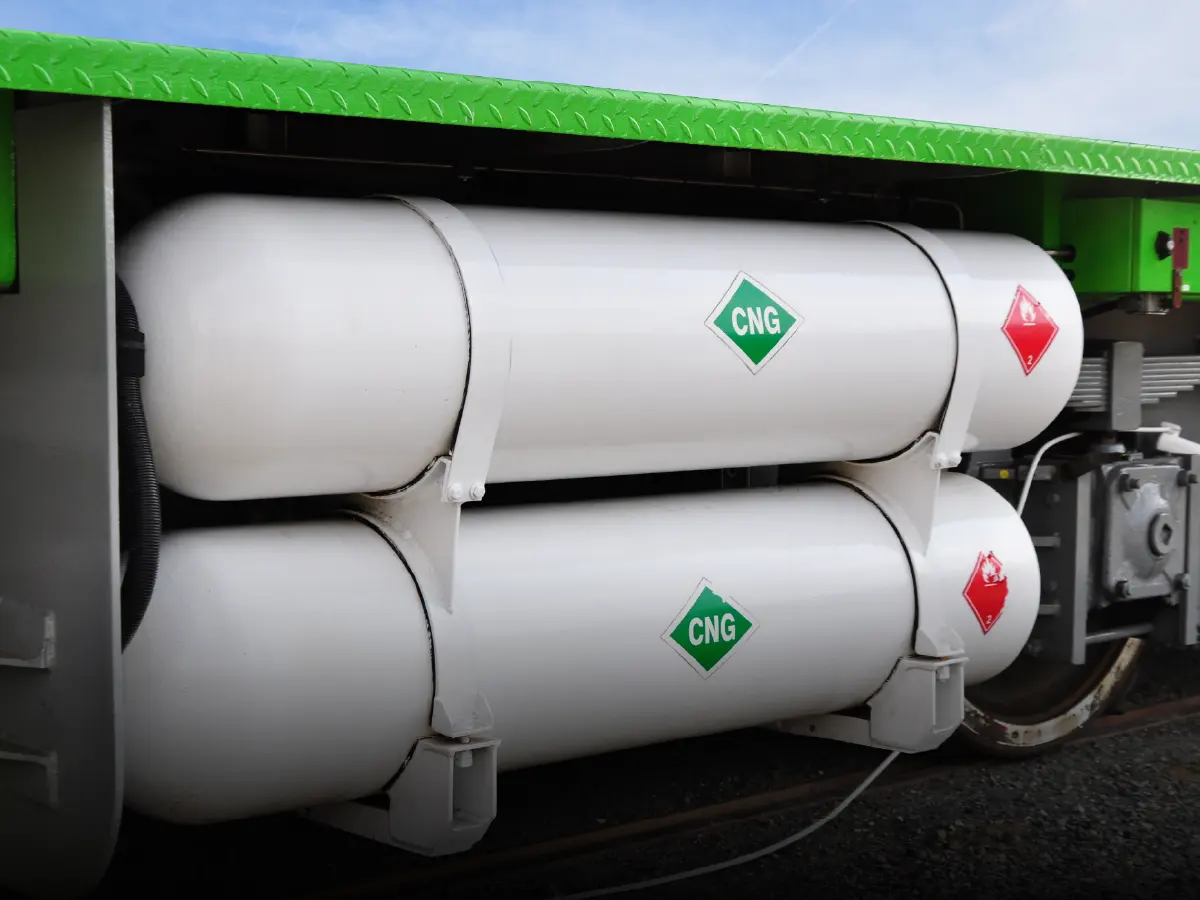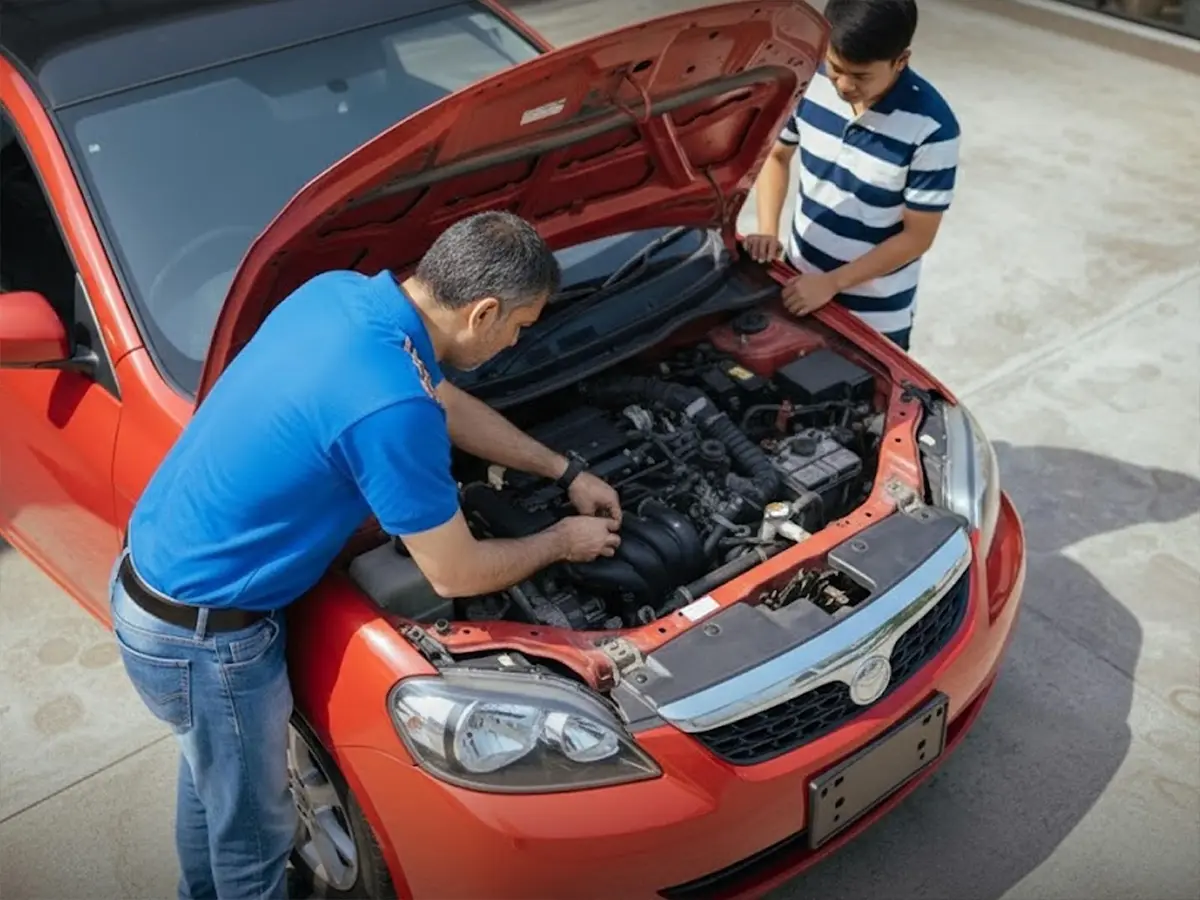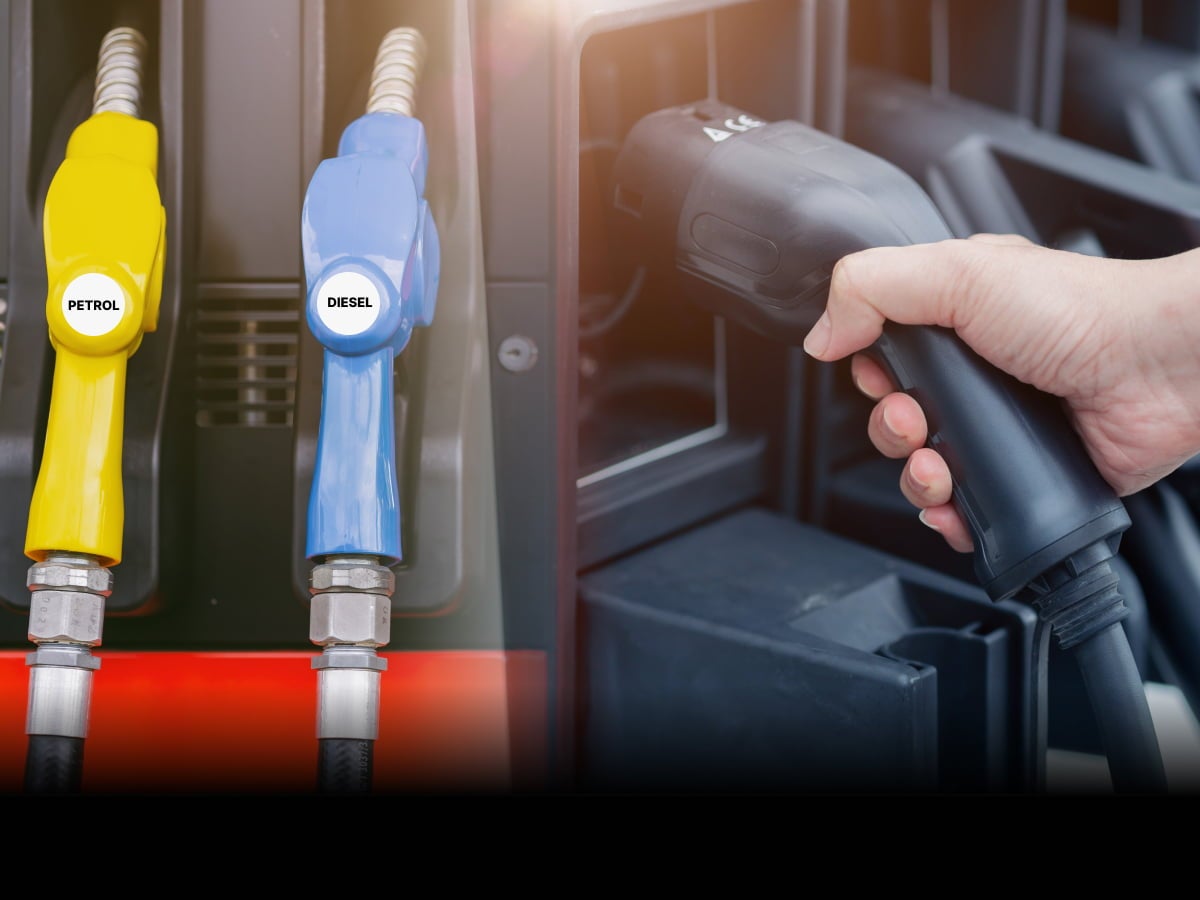

CNG Full Form: Everything You Need to Know
- 1CNG or Compressed Natural Gas offers cleaner emissions than petrol or diesel fuels
- 2Factory fitted CNG kits offer a better experience than retrofitted CNG kits
- 3Maruti Suzuki, Hyundai and Tata offer factory fitted CNG kit options for some models
The full form of CNG is compressed natural gas, an alternative fuel, which is not just cleaner and greener, but also more affordable. In recent years, Indian automakers like Maruti Suzuki, Hyundai, and Tata Motors have significantly expanded their CNG line-up. In fact, Tata Motors has gone a step further by offering CNG with an automatic transmission on the Tiago and Tigor. What was once seen as a fuel meant only for taxis, is now being actively adopted by private car buyers.
So, what’s driving this surge in demand for CNG cars? To make things easier, let us start with the full form of CNG,, before moving on to what it is CNG fuel, what are the uses of CNG, its history in India and why it is being actively adopted by three top car makers in India today.

CNG Fuel Full Form
The full form of CNG is Compressed Natural Gas. Every alphabet in the acronym CNG has its own meaning. Let’s break it down.
C - Compressed
CNG is a type of gas used as a fuel, primarily composed of methane (CH4). This fuel gas is then compressed to less than 1% of its original volume at standard atmospheric pressure, which is how it becomes CNG or its full form Compressed Natural Gas. Compressing it allows a large amount of natural gas can be stored in a relatively small tank or cylinder to drive a vehicle, and therefore, the term Compressed is used in CNG fuel full form.
N - Natural
Most fuels we know today are manufactured or refined; however, the ‘N’ in the CNG full form stands for Natural, indicating that this fuel is a naturally occurring substance. It is found trapped in the earth’s crust and was made from the plants and animals that died millions of years ago. Just like petrol and diesel, CNG is also considered a fossil fuel, however, it burns comparatively cleaner.
G - Gas
As mentioned earlier, CNG is compressed for storage and use in vehicles.. However, unlike other gaseous fuels such as LPG or LNG, CNG remains in a gaseous state even after it is compressed. This key characteristic is represented by the ‘G’ in the CNG fuel full form.

What is CNG Fuel?
While we have explained the CNG full form above, you will still need to understand a little more about it to be able to understand why CNG is used to power cars. Here, we answer the small questions that make up one big question, what is CNG fuel?
1) What is CNG made of?
As mentioned earlier, CNG is a natural gas that is made predominantly of Methane (CH4). However, Methane makes up about 90 to 95 percent of CNG. The rest includes other flammable gases like ethane, propane and butane.
2) Does CNG burn the same way as petrol or diesel?
More or less, CNG is utilised in car engines the same way petrol and diesel are used. A mixture of air and CNG is mixed and pushed into the cylinder which then undergoes combustion. However, CNG has a higher Octane rating than petrol. An octane rating refers to the amount of compression a fuel can undergo before it ignites due to compression.
3) How does CNG smell?
CNG, on its own, is an odourless gas. However, for leakages to be easily identified, an odorant or a gas with a smell is added to CNG. Sulphur based compounds are generally used for such purposes.
4) Are CNG Cars Safe?
CNG is a flammable gas and its use in cars is as safe as using any other gaseous fuel for various purposes. To give you a better idea of the safety of CNG, it is important to understand that CNG is lighter than air, weighing only about 0.6 times that of an air molecule. In the event of a CNG leak, the gas spreads quickly instead of concentrating in one area, thereby alleviating the risks of a fire or an explosion.

However, CNG tanks are rigorously tested and have been known to withstand high pressures. Furthermore, sensors are used to detect leaks and if a leak is detected in the CNG system, an automatic shut off valve cuts the supply of CNG. CNG tanks also have pressure release valves that can safely release the gas into the air if excess pressure is detected.
5) Does using CNG in cars cause emissions?
CNG, or to use its CNG full form, Compressed Natural Gas, is billed as a greener alternative to petrol and diesel. However, it too gives out emissions such as carbon dioxide (CO2), carbon monoxide (CO), nitrogen oxides (NOx) and particulate matter (PM). That said, in comparison to petrol, these emissions are 25% in the case of CO2, 70% in the case of CO and 40% in the case of NOx emissions. Therefore, while CNG also emits undesirable gases and compounds in its combustion, their quantity is much lower in comparison to petrol.
Brief History of CNG
While the use of CNG to run cars isn’t as popular as petrol or diesel, experiments on the use of CNG began in the middle of the 18th century. The first proper use of CNG came at the time of World War 1, between 1914 and 1919, when it was used as transport fuel due to the shortage of petrol and diesel. It was subsequently used in the second World War as well between 1939 and 1945. After that, the USA started researching transporting CNG through ships.
The use of CNG for running vehicles in India started in the 21st century, when Delhi became the first city in India to use CNG to run buses and auto rickshaws. This move had come after a Supreme Court ruling in 1998 which had mandated that CNG be used to run public transport vehicles to battle the problem of rising air pollution at the time. This initiative soon spread to other metro cities in the country as well, starting with Mumbai.
The increasing network of CNG pumps and its cheap availability between 2001 and 2010 saw the advent of retrofitted CNG kits for cars. These kits could be fitted to petrol cars and while it offered a low range compared to a full tank of petrol, the use of CNG reduced the running cost of cars by three to four times. However, retrofitted CNG cars mostly saw a huge drop in performance, and to fill CNG, car owners had to open the bonnet of their car to reveal the filling point.
In 2009, Maruti Suzuki became the first car maker to introduce a factory fitted kit on one of its cars, the Alto. Soon enough, it offered CNG kits on other cars as well, with the Maruti Suzuki WagonR CNG becoming one of the most hot selling models. Factory fitted CNG cars came with the promise of only a marginal drop in performance, had better safety systems, and most importantly, CNG could be refilled from a refilling point positioned inside the fuel filler cap, similar to how petrol or diesel is filled in cars.
Since then, Hyundai and Tata Motors have been the two other car makers that offer factory fitted CNG cars. Tata Motors also holds the accolade for being the only car maker in India to offer a factory fitted CNG kit with an automatic transmission on the Tiago and Tigor.
What are the Uses of CNG?
CNG or Compressed Natural Gas has many uses, and they aren’t limited just to the field of transportation. CNG is used for:
- Transportation: CNG is used to power public transport vehicles such as buses, auto rickshaws and even trucks, apart from its widespread use in commercial and private cars.
- Industrial Use: CNG is used in large industrial applications for generating power. It is also used in manufacturing processes that require the generation of heat.
- Domestic Use: CNG is also used for domestic purposes. It is used for cooking purposes, replacing LPG cylinders, when it is directly transported to homes using pipelines. It is also used for heating homes in colder countries.
Agricultural Use: CNG is used in the agricultural field for powering water pumps and for drying crops.
Advantages of CNG Fuel
The rise of CNG for automotive use over the last decade has been largely due to its many advantages:
- Fuel Efficiency: CNG offers a better fuel efficiency than either petrol or even diesel engines, which can significantly lower the running costs of a car. CNG is also priced lower than petrol or diesel, further driving home its advantage. The highest mileage CNG cars can deliver more than 30 km per kg, making them highly economical vehicles.
- Lower Air Pollution: Burning of CNG inside an engine emits lower pollutants like CO2, CO, NOx and Particulate Matter (PM). This has been one of the main aims of the Indian government behind promoting the use of CNG.
- Less Engine Deposits: The cleaner running of CNG means that the amount of carbon deposits in the engine are significantly lowered, which can increase its lifespan.
- Higher Octane Rating: CNG has a higher octane rating than petrol, which essentially means that it needs to be compressed more than the petrol to self ignite. A higher octane rating means that the engine isn’t subjected to knocking which could wear it out faster. This is also responsible for gaining back some of the performance that is otherwise lost because of using CNG.
- No Fuel Adulteration: While petrol and diesel can be adulterated at different steps in the supply chain, CNG is transported directly through pipelines to CNG pumps with heavy safeguards in place. This reduced any kind of adulteration in CNG at the pump level.
- Lower Dependance on Import: The oil to manufacture petrol and diesel is imported into India whereas CNG is locally available. This reduced the overall import bill for the country.
Disadvantages of CNG Fuel
While CNG has many benefits, the technology behind its use has certain limitations:
- Range of CNG Vehicles: The CNG used to run cars is stored in high pressure tanks that are located in the boot of a vehicle. The overall size limitations means that CNG tanks can’t hold enough gas to offer the same range as petrol cars, and their range is often limited to one-third of the range when using petrol.
- Availability of CNG Pump: The number of CNG pumps have been growing in the past years, however, they are still not as widely located as petrol pumps. CNG owners have to often go out of their way to fill up on the gas, whereas petrol pumps can often be found on your route. Furthermore, CNG pumps in de
- Compromised Boot Space: CNG tanks are positioned in the boot of a car, and in most cases, they can render them useless. This makes CNG cars less usable for road trips when you need to store luggage in the boot.
- Higher Upfront Cost: CNG cars cost about Rs. 80,000 to Rs. 1 lakh more than regular petrol cars. Even for people who have a higher monthly average running, it can take a couple of years to make back the added cost of a CNG car.
- Reduced Performance: Cars running on CNG offer a lower performance output compared to cars running on petrol. While this gap in performance isn’t as noticeable in factory fitted CNG cars, it can be a major concern on cars retrofitted with CNG kits. Furthermore, the CNG kit price in India can vary from brand to brand when opting for aftermarket setups.
Additional CNG Checks: CNG cars need to undergo a safety check every three years to keep them legally certified for use on Indian roads. It includes hydro testing the CNG chamber for any leaks and is an additional expense for CNG car owners.
Should You Buy a CNG Car?
Understanding the CNG full form - Compressed Natural Gas - truly helps us in figuring out how the fuel works and its potential advantages that has helped it gain such high degree of adoption in the market today.
If your average monthly running is on the higher side, at least 1500 to 2000 km, then buying a CNG car to save on running costs truly makes sense for you.. Furthermore, having access to a CNG pump near your house or office is another consideration.
However, if your average running is under 1500 km a month, it is not advisable to opt for a CNG car due to the higher upfront cost. Furthermore, if you frequently undertake highway journeys or go on roadtrips, the compromised boot space will also negatively impact your ownership experience.
Frequently Asked Questions
Expand all




























